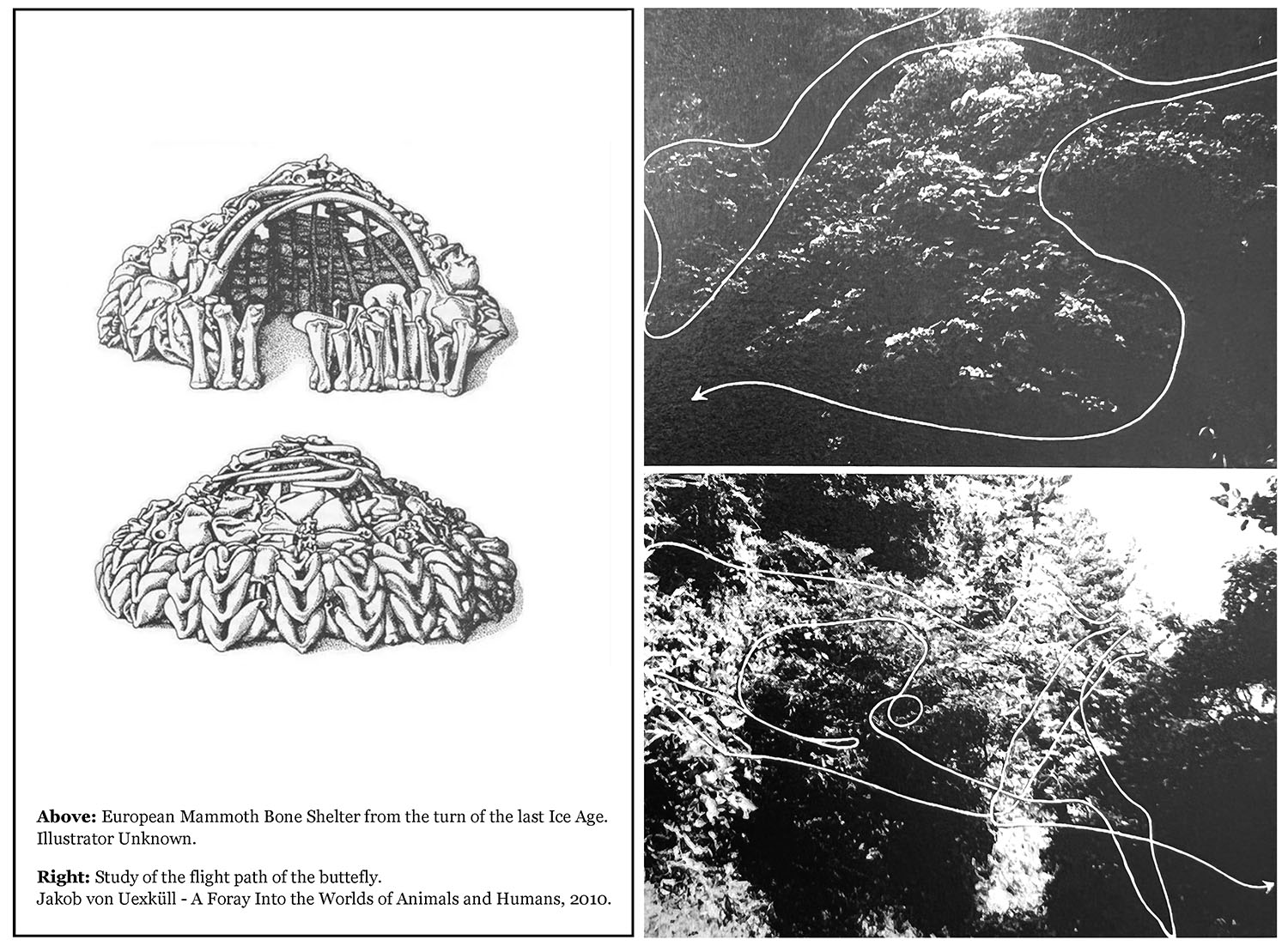Johannes Berry en Steven Schenk
Mediating Tactics
Sem2, ENG, Brussels
INTRODUCTION
The constructive turn, roughly the period from 2020 to 2050, is currently probably the most talked-about era in the history of construction. Some see this turn as a sharp break from the digital world, a time resulting in disconnection from an intense establishment of data driven interconnectedness. Others though, have tried to make the constructive turn into a non-event, a mere illusion of retrospection. More circumspect scholars nowadays, however, recognize the many important continuities between the scientific and later the digital era and the constructive turn. During this era the digital world brought visibility to how the migrations of people, pandemics, natural disasters, wars, construction and even our actions were interconnected. It was not that these things did not exist previously, but with this new visibility, people realised just how interconnected things were and how disconnected they have become from the effects of their actions and the physical world. Up to this point scientists, whose increasing specializations reduced their focus to narrow topics of study and objects in isolation, and whose methods seemed to emphasize dissecting rather than synthesizing approaches, actively discouraged questions of our instinctive being in constant exploration for comprehension or connection with the physical universe.
For a moment people thought this void would be filled, as big data teamed up with scientists, politicians, and businesses, promising a symbiosis between the people and the planet that will lead to prosperity. Architects started to pledge for processes of de- and rematerialisation, as they reframed the territory of architecture, not differentiating between natural or manmade environments, understanding, and approaching our world as objects with properties to be controlled. The collaboration between big data and scientists, politics, and business made it possible to revisit the modernist dream. However, with data and technology taking centre stage, it did not take long before questions arose about how it was measured or collected, disagreement about its interpretation led to court cases, and misuse of its control lead to suppression and profit.
Being confronted with a growing sense of disconnection with the physical universe, humans starting gravitating towards ideologies or conspiracy theories for meaning. However slowly a new approach seemed to arrive, in different professions, and in architecture, the alchemist, promised to reconnect humans with the physical universe, by unravelling moments of
resonance between scientific observation and our human perception of the world. This turn was particularly described by some, as a new way or arguably a very old way humans could engage with the physical universe, which rather than trying to define and control it, was focussed on establishing new relationships and becoming part of it.
New ways to construct and make space was seen as way of interacting with and relating to the world, rather than giving meaning to it, which brought ‒ as a basis for its eventual success ‒ worlds of beauty and promise that we stopped daring to imagine and as such had forgotten how to see. When thinkers after the turn looked out on the world, they saw again a cosmos in the true Greek sense of that word, a well-ordered and arranged whole. They saw the various components of the physical universe tightly interwoven with one another and our consciousness. Humans were not seeking their place in the universe anymore but had
realised they were part of it all along.
Read the full studio description here (pdf)

